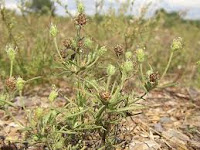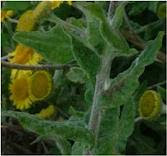This rosewood tree is native to south and south-east Asia and some Pacific islands. It is listed as Vulnerable in the IUCN Red List and has been extinct in Vietnam for 300 years or so. It is valued for its timber which is used in construction, boat and canoe building, furniture, tools and carvings. The heartwood is a beautiful light yellowish-brown through to red-brown while the sap wood is a creamy pale yellow. The heartwood yields a red dye.
Narra is the Philippino name for this tree, although the same name can refer to other members of the Pterocarpus genus. It is valued not only for its timber but also for its medicinal properties. The tree has been introduced to the Caribbean islands, the Indian subcontinent and Sri Lanka , the Congo , Sierra Leone and Tanzania in the African continent, and Pacific islands to which it is not native. It is a member of the Fabaceae or Leguminoseae family of plants and so is a relative of the amaltas (Indian laburnum), the European laburnum, carob, peas, beans such as the green bean, borlotti bean, soya beans, chickpeas and choliya, the tree from which we get gum Tragacanth, the butterfly pea, the trees, dhak, jhand, the Indian coral tree, the Borneo or Pacific teak, the Lead tree (Ipil –Ipil), the pongam tree, the monkey pod tree, ashoka, indigo, lentils, alfalfa, field restharrow and a whole host of other plants.
The genus name, Pterocarpus comes from the Greek, pteros meaning winged and karpos meaning fruit, which describes the seeds of this genus. It is known by other botanical names, which are not accepted, Pterocarpus camlinensis Kanch., and Pterocarpus draco as well as Pterocarpus indica.
It is a useful tree as it fixes nitrogen in the soil and the leaves which fall help to enrich the soil. However it cannot be grown with food crops because it gives shade and is a tall tree which can reach heights of 35 metres plus. It is, however, a useful windbreaker and living fence.
It has lost some of its natural habitat which has contributed to its decline, but the illegal logging and exploitation of this tree for its timber is the main factor in this decline. In the Philippines in recent years, the tree has become a source of popular herbal remedies for such diverse health problems as headaches, rheumatoid arthritis, leprosy, T.B., menstrual cramps, diabetes and flu. As the bark and wood are employed in herbal remedies this growth in popularity may cause further depletion of these trees.
Traditionally in the Philippines the bark has been used in a decoction for diarrhoea, and the root extract for syphilitic sores, a decoction of the gum or resin from the trunk of the tree has been used for diarrhoea and dysentery, while an infusion of the leaves has been used for stomach problems, and sprue, which is a tropical disease affecting the throat, mouth and digestive system. The infusion is also used for arrhythmia, and heart palpitations, rheumatism and leucorrhea.
 The fresh young leaves are used for skin problems including prickly heat rash, and sores, and they are also used for the same purposes in
The fresh young leaves are used for skin problems including prickly heat rash, and sores, and they are also used for the same purposes in In Malaysia the juice extracted from the roots is used for syphilitic sores and mouth ulcers. The bark is used in Papua New Guinea for T.B. headaches, sores and as a purgative, while in the Solomon Islands it is used for dysentery, heavy menstruation, and gonorrhoea. It is also used for similar purposes in Vanuatu , but it is also used as a vulnerary there (for wound healing).






















































